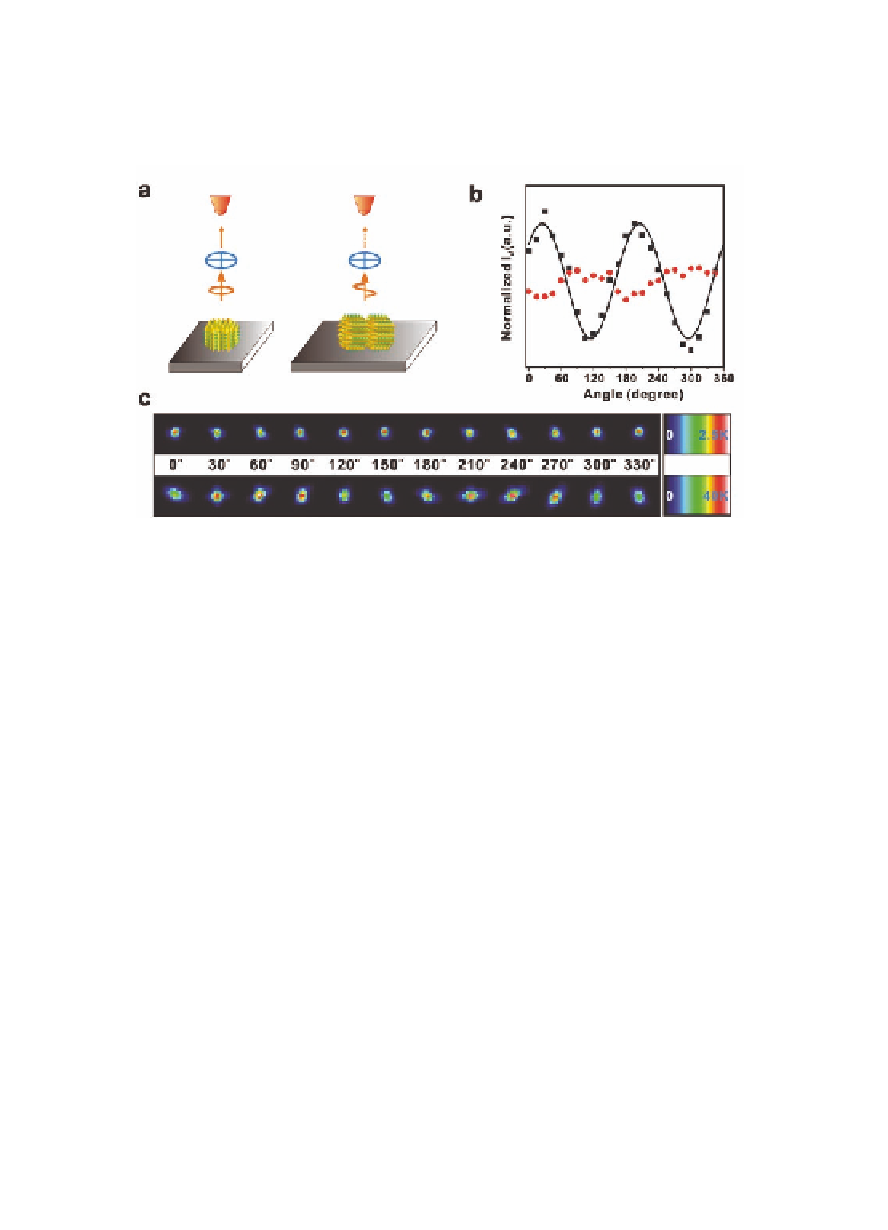Biology Reference
In-Depth Information
that the total PL intensity of a typical bilayer superparticle is more
than an order of magnitude larger than that of a typical single-layer
superparticle, while their volume difference is only about a factor of
two (Fig. 13.14).
Figure 13.15
(a) Scheme for polarized PL measurements. (b) Normalized
I
as a function of polarizer angle: a single disk in red, and
a single stacked-disk array in black.
//
is the PL intensity
measured at the direction parallel to the optical axis of the
polarizer. The values of
I
//
I
are normalized with their mean,
//
2
and solid line is a cos
fit. (c) PL images of superparticles
as a function of polarizer angle: a single disk (top) and a
single stacked-disk array (bottom). From Ref. [21] with
permission.
13.5
Concluding Remarks
This chapter reviewed the significant progress that has been made
in the utilization of inorganic nanocrystals (or artificial atoms) as
building blocks for preparing colloidal superparticles. New and
interesting phenomena, structures, and materials have been identified
through these studies. However, the promise of superparticles is far
from fully realized because of the inability to precisely control the
superparticle synthesis. It is clear that, in the next few years, major
advances will be made to promote a deeper understanding of how
cooperative interparticle interactions can be induced and controlled
during the nucleation and growth of the superparticles. These

Search WWH ::

Custom Search